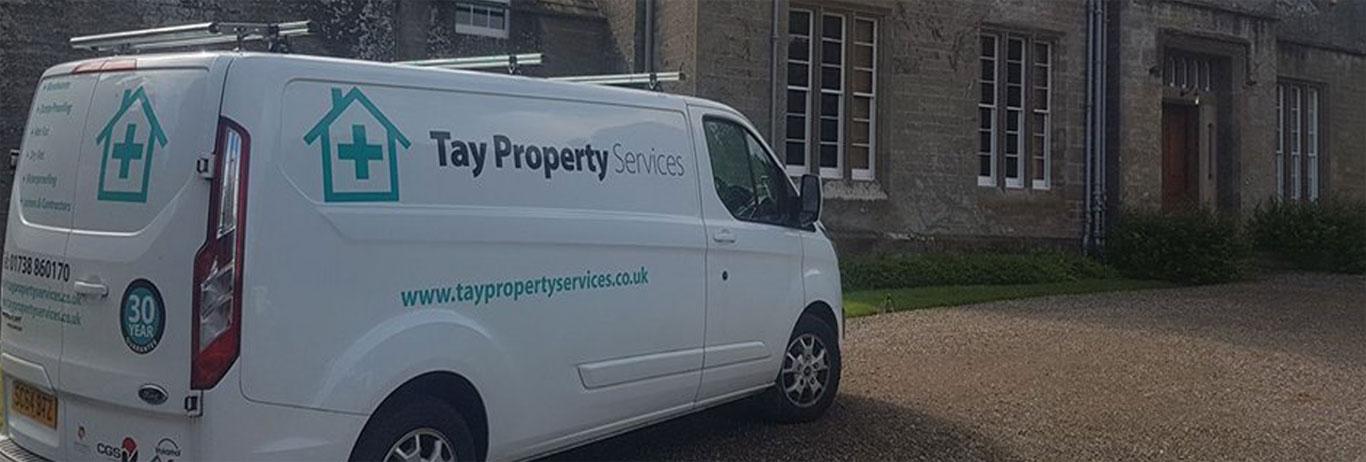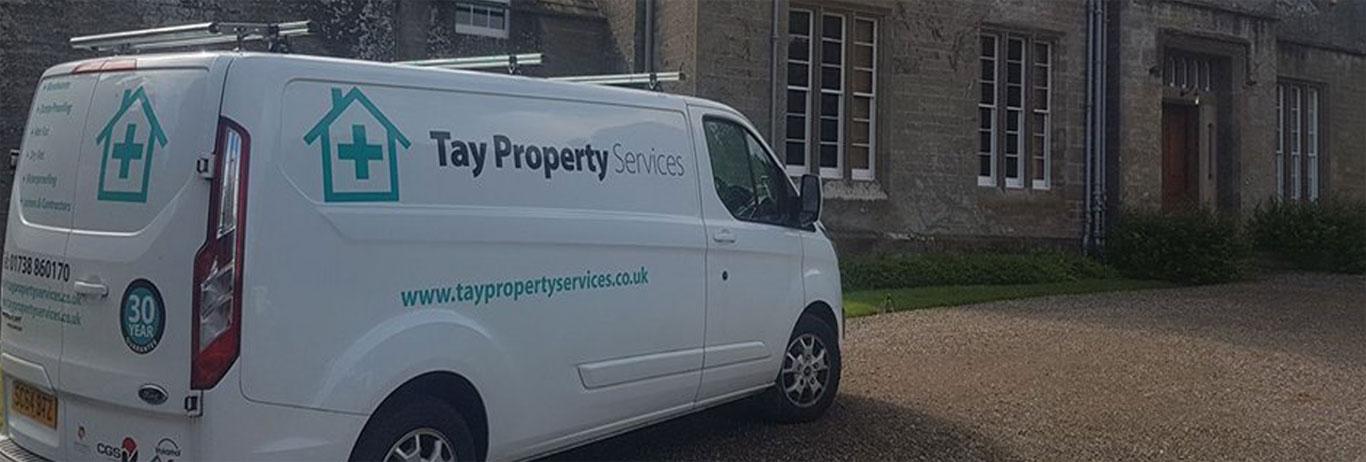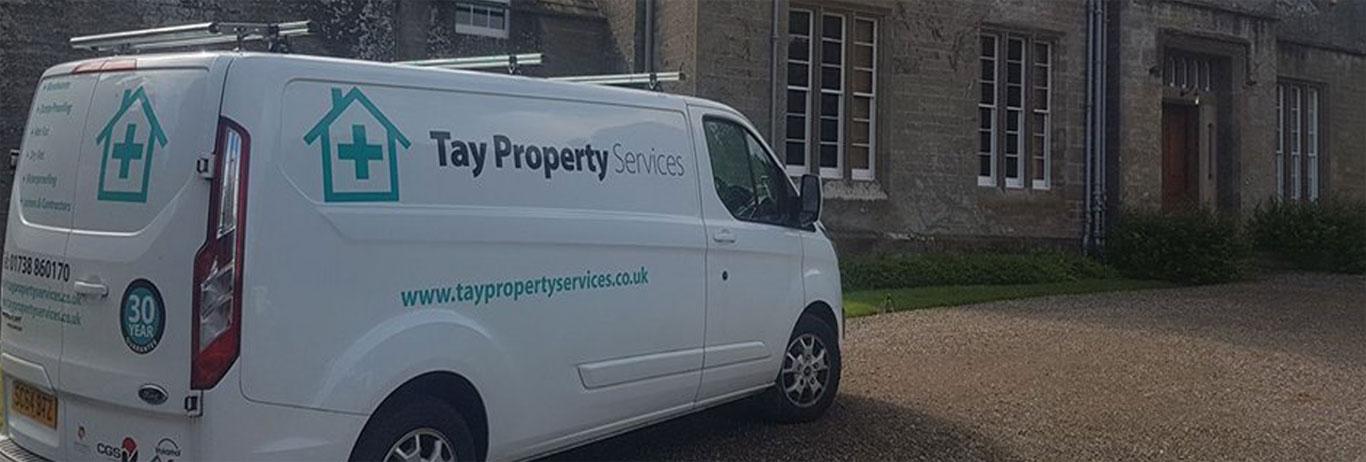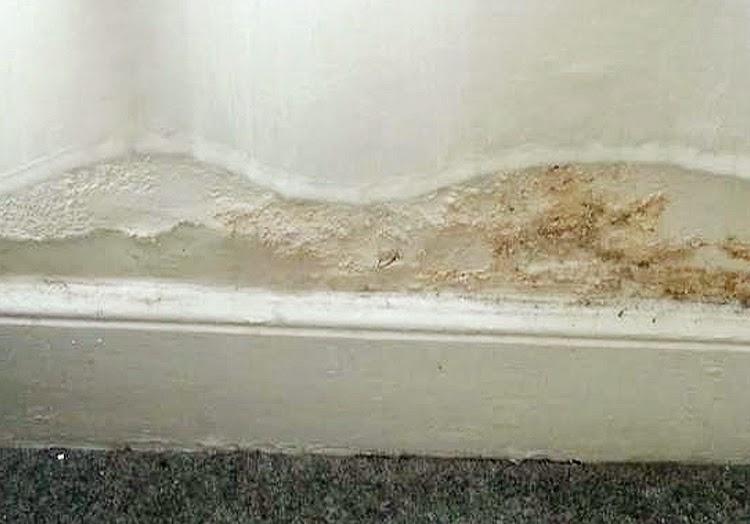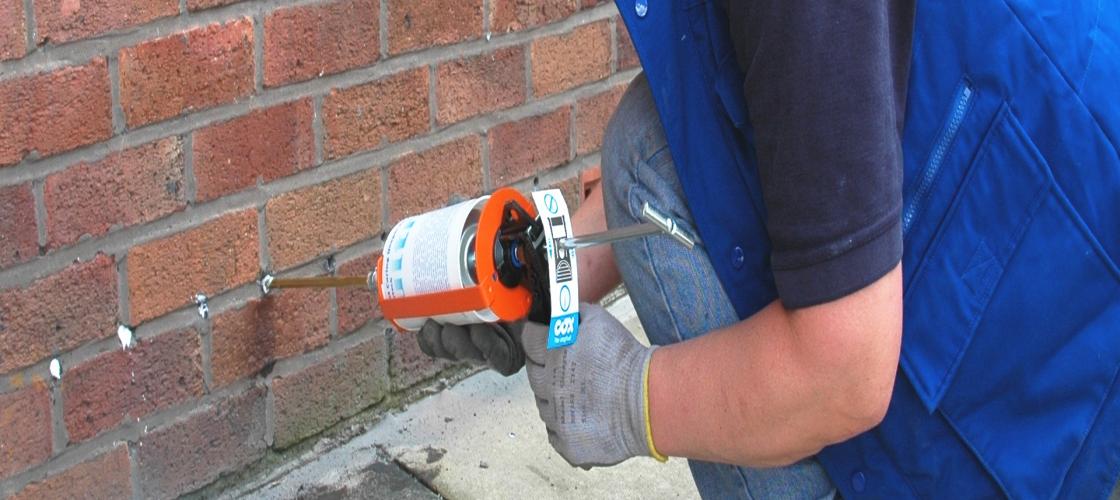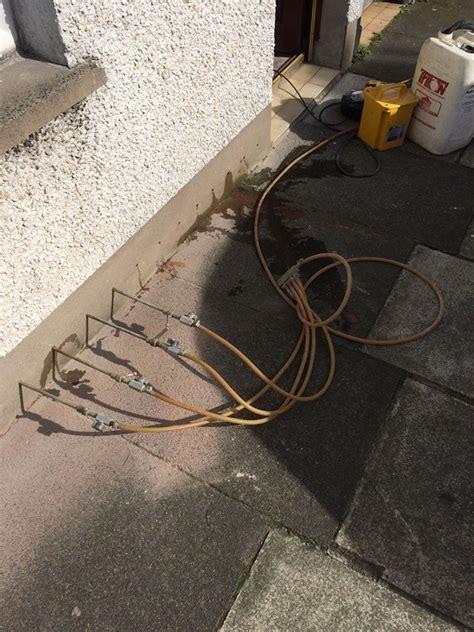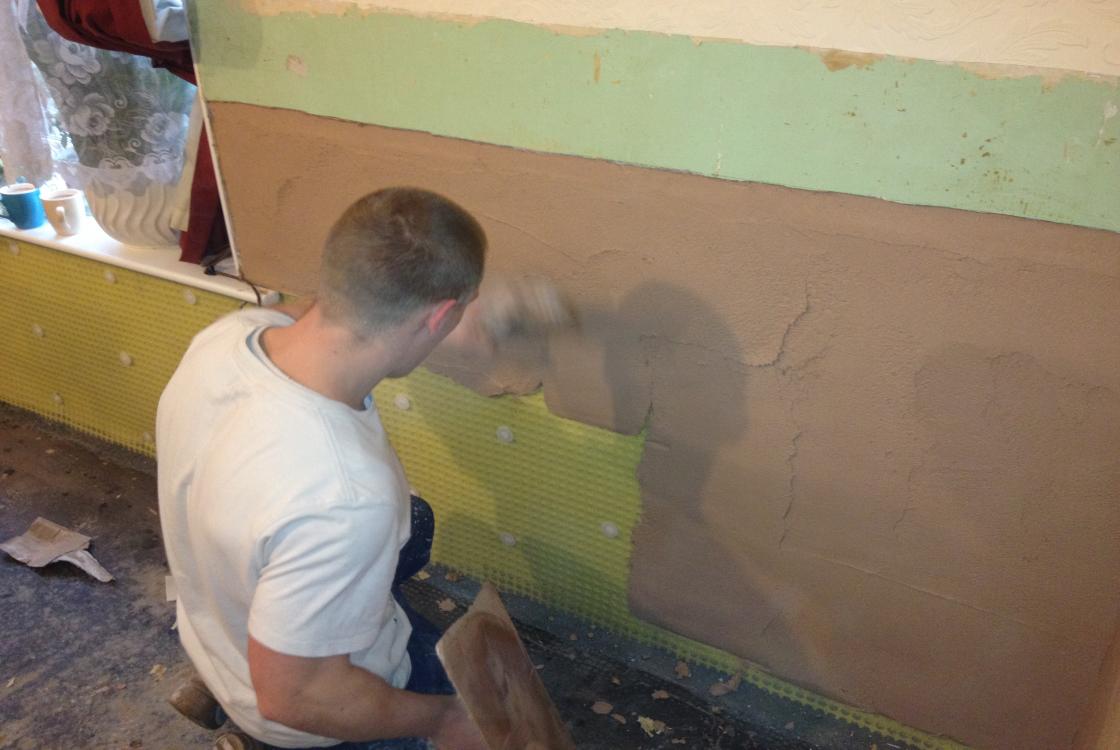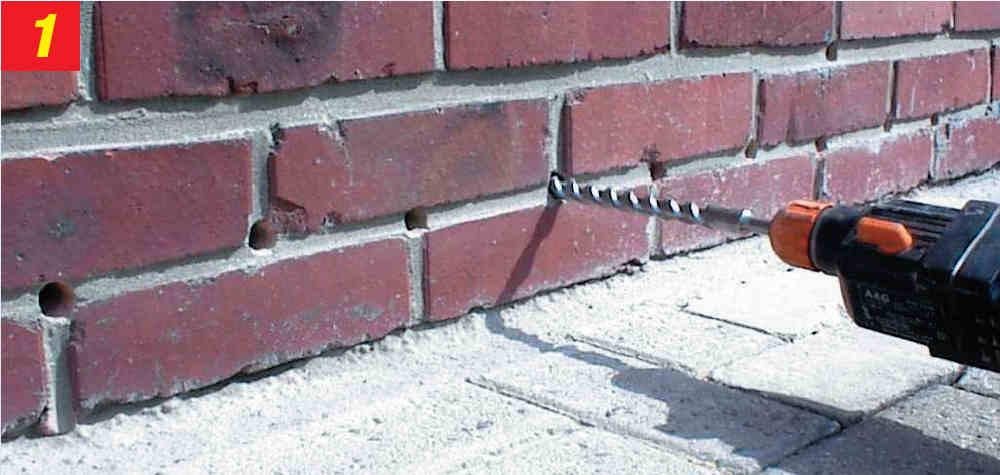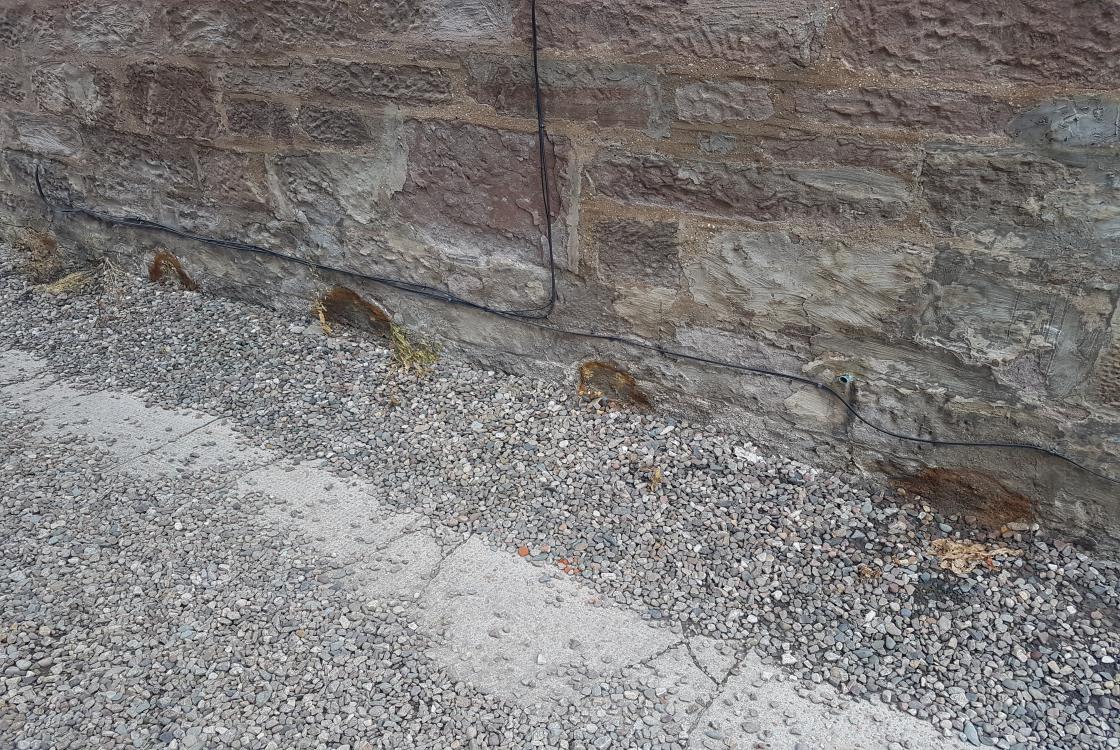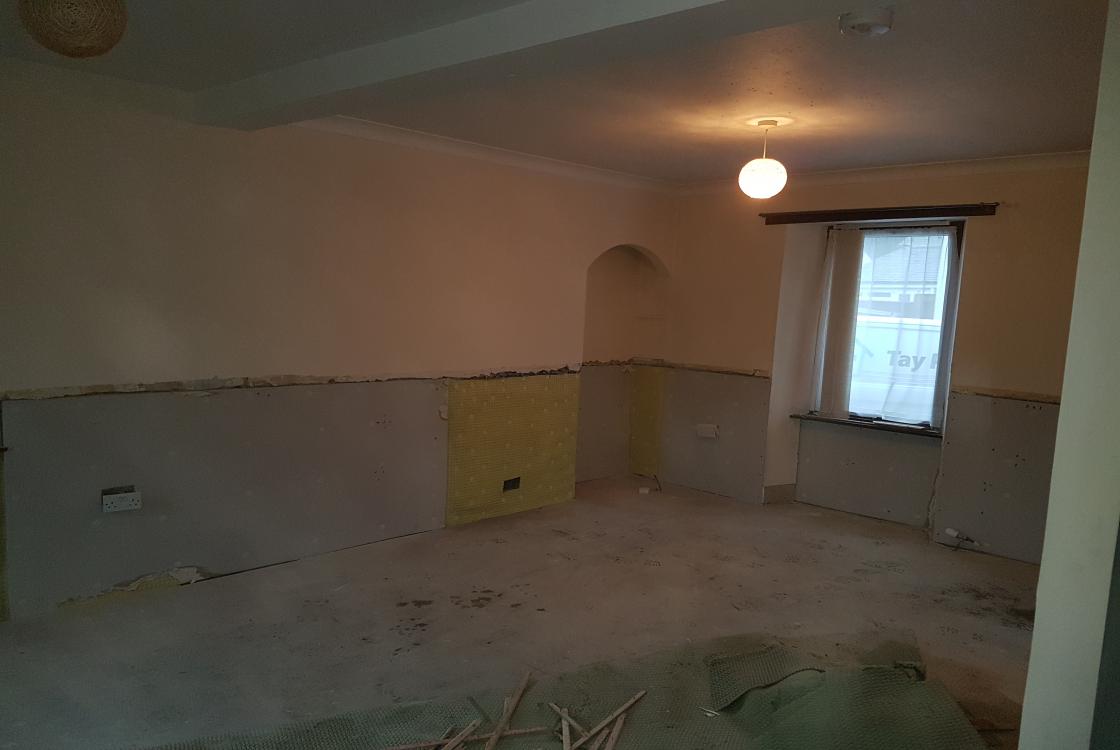The Dangers of Rising Damp
A Common Cause Of Wall Dampness
Rising damp is a common cause of moisture that can make a wall damp. It can be treated by fitting a damp course, however this only prevents damage from dampness being drawn up into the wall from the ground through capillaries within the fabric of the masonry.
Our “No Obligation” inspection will confirm if a rising damp treatment is appropriate in your property.
The height to which rising damp can affect a wall is usually determined by the evaporation performance of the wall. For example, dense renders can restrict evaporation, which can result in rising damp climbing more than 1m.
Salts from the ground can also be carried up the wall, where they can cause further damp problems. Therefore, a specialist salt-resistant plaster should be used to prevent migration of salts into surface plaster.
At Tay Property Services, we insert two types of chemical damp proof course, depending on the construction of the wall(s) to be treated.
(1) Water-based siliconate low pressure injection.
(2) A silicone-based cream injected into the masonry.
1. Access
A chemical damp proof course involves drilling a series of holes, usually at the base of the wall to be injected. Drilling can be made from whichever side is more practicable, and this will be indicated on our plan for the work.
Prior to the arrival of our technicians, clients are required to enable free access to all internal walls to be treated, by removing skirting boards, fittings, furniture and carpets, and any other obstructions that might hinder the treatment.
In addition, we will require free access to the ground area adjacent to any external wall that has to be treated. All external obstructions, including vegetation in direct contact to the wall, may therefore need to be removed during the course of the treatments.
2. Abutting Structures
Vertical rows of holes will be drilled and injected as necessary, in order to isolate any abutting structure and avoid any risk of bridging the new damp proof course.
3. Varying (floor) Levels
The damp course will normally be inserted to a height some 50 -150mm above the finished floor, or the external earth or floor level, whichever is the higher.
Areas of wall against higher ground can be affected by lateral penetration of dampness, and clients are advised to have the higher ground lowered below the level of the damp course, or alternatively to have these areas treated by a suitable tanking / waterproofing system.
4. Electric Power
Clients are required to provide electric power, minimum 10 amp x 240 or 110 volt supply, together with normal lighting facilities where necessary.
Where power is not available a portable generator can be supplied by Tay Property Services, at an extra charge.
5. Drying Out
After the installation of a damp proof course, the drying out period can vary considerably. However, as a guide, it is estimated to take one month for each 25mm of wall thickness.
The drying out can be influenced by heating, ventilation, and the condition of both internal plasters and the external walling. Clients should bear in mind that penetrating dampness can also be present in the walls through the use of absorbent materials that retain airborne condensation; faulty pointing; poor external rendering; or damage to rainwater gutters or pipes. Such defects should be attended to without delay, as a rising damp treatment has no effect on sources of dampness other than dampness rising into the base of the wall from the ground.
6. Re-plastering
After damp proof injection, we recommend that plaster is renewed using a suitable plaster / render. However, in some cases it may be an advantage to delay plastering and allow the treated wall to dry out, to assess the extent of dampness caused by humidity. In this way, it may be possible to restrict the extent of re-plastering required.
To allow for the initial drying out, walls may need to be left exposed for at least 14 days prior to re-plastering. The precise period will vary, relevant to the degree of dampness that initially affected the walls.
Great care should be taken to ensure that salt-affected plaster does not harm future decoration. One of the following recommendations should be followed prior to decoration:
- Where the existing plaster is soft, porous, loose, or hollow sounding, it should be removed immediately up to a level of 1m, or 300mm above the moisture level, whichever is greater. Re-plastering must always be carried out using a salt-resistant renovation plaster.
- Damp plaster may not always be unsound. If it is firm to the touch it may be allowed to remain for approximately 12 months. During this time, it is essential that no wallpaper is left covering affected walls, and initial decoration should be confined to a water-bound matt emulsion paint for a period of up to two years.
7. Decoration
Initial decoration after any treatment for rising damp should be regarded as temporary, and clients must appreciate that after the full drying out period is complete, re-plastering may ultimately be required. Therefore, clients are strongly recommended not to apply permanent decoration, such as wallpaper or gloss paints. Instead, use a suitable emulsion paint, to allow moisture within the wall to fully evaporate.
Fluids used by Tay Property Services Ltd are approved by the British Wood Preserving and Damp Proofing association. Where appropriate they carry manufacturers’ guarantees, which will be highlighted for you.
Our Services
-
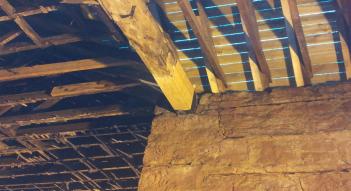
Joinery & General Building Work
As well as our range of specialised timber treatments for your home or business premises, Tay Property Services will undertake any necessary joinery work you require – from fitting new uPVC windows and doors; installing kitchens or bathrooms; building extensions or decking; and much more.
View Details -
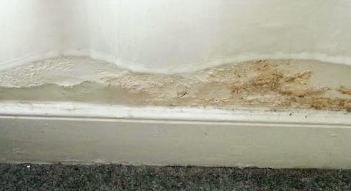
-
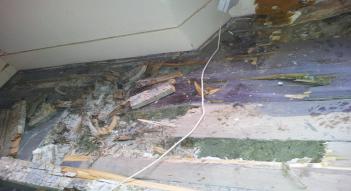
True Dry Rot Fungi
Don’t delay in asking for a survey to inspect for dry rot damage, as the fungi which cause it (Serpula Lacrymans) has the ability to travel through building materials other than timber, meaning it can spread quickly once established.
View Details -
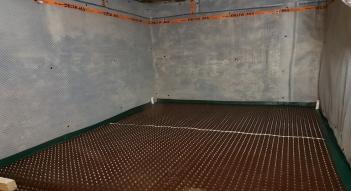
Waterproofing
Tanking is a particular approach used to ensure that walls and floors are permanently watertight, in any structure below ground.
View Details -
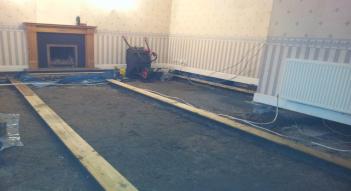
Wet Rot Fungi
Where timber is exposed to naturally occurring high moisture levels it will, in time, begin to rot.
View Details -

Woodworm
Woodworm is the generic name given to damage caused to timbers in roofs, and other wooden material such as skirtings,
View Details

